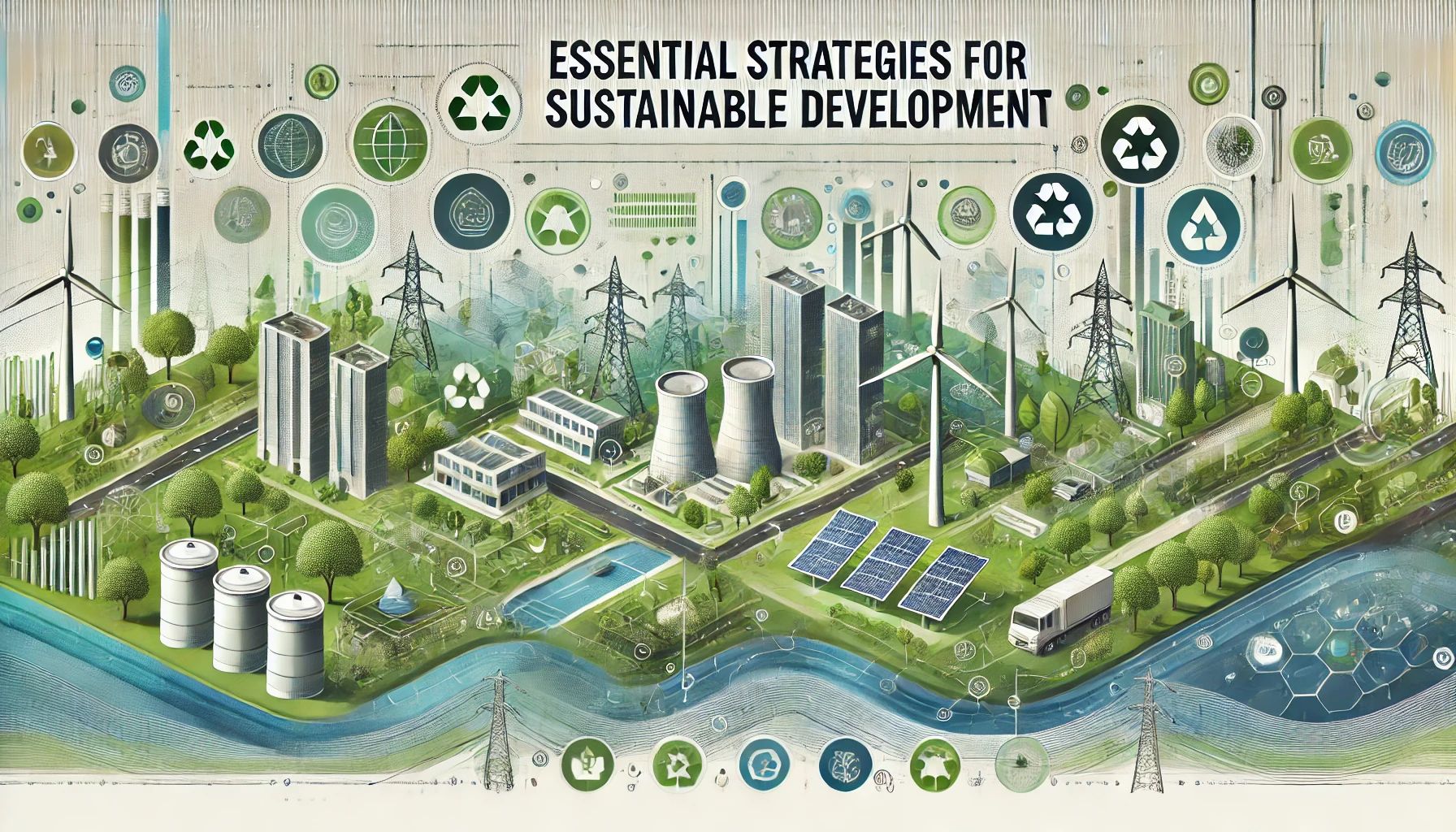Unlocking Success in Small Industries: Sustainable Growth Strategies
Small industries are vital to today’s economy, driving innovation and creating jobs. However, many face challenges when it comes to growth and long-term sustainability. Understanding how to navigate this landscape is key to unlocking success. This article outlines strategies that can help small businesses grow sustainably and thrive in a competitive market.
Navigating the Landscape of Small Industries

Small industries contribute significantly to job creation, innovation, and community building. Typically defined as businesses with fewer than 500 employees, these industries encompass a wide range of sectors, from retail shops to small-scale manufacturers. Despite their size, these businesses have unique strengths and challenges that shape their growth potential.
Emerging market trends, like the shift toward sustainability, are creating new opportunities for small industries. Consumers are increasingly drawn to eco-friendly products, opening the door for businesses that prioritize green practices. For instance, a small bakery using organic ingredients can appeal to health-conscious consumers and differentiate itself from larger competitors.

Additionally, small industries can leverage their agility and strong community ties. Their ability to quickly adapt to changing consumer preferences and foster close relationships with local customers offers a competitive advantage. Engaging with the community through events or sponsorships can help build brand loyalty and create lasting customer connections.
Identifying Growth Opportunities
Sustainable growth starts with recognizing opportunities within your market. Begin by analyzing trends that affect consumer preferences. For example, the growing demand for eco-friendly or locally sourced products might present a chance to align your offerings with these values.
Assessing your competition is also essential. Identify their strengths and weaknesses to uncover gaps in the market where you can excel. Offering unique products, superior customer service, or innovative solutions can set your business apart.
Engaging directly with your customers through feedback, surveys, or social media can reveal what they value most. Additionally, exploring new demographics or expanding into different markets can help increase your customer base. Finally, keeping up with emerging technologies, such as e-commerce platforms or data analytics, can help boost growth by increasing efficiency and reach.
Strategies for Sustainable Development

To achieve long-term success, small industries must focus on strategies that promote sustainability. These include:
Prioritizing Quality: High-quality products or services help build customer loyalty and generate repeat business.
Embracing Innovation: Continual improvement in processes or offerings ensures your business remains competitive.
Investing in Employee Training: Well-trained staff are more productive and engaged, which leads to better customer service and overall efficiency.
Implementing Sustainable Practices: Reducing waste, using eco-friendly materials, and conserving resources can reduce costs and appeal to environmentally conscious customers.
Building Strong Relationships: Collaborating with suppliers and fostering partnerships strengthens your supply chain and customer relations, boosting growth potential.
Leveraging Technology to Optimize Operations
In today’s fast-paced business environment, technology is a crucial asset for small industries. Automation can streamline operations, reducing the time spent on manual tasks such as inventory management. Communication tools like Slack or Microsoft Teams enable real-time collaboration, while data analytics platforms offer valuable insights into customer behavior, helping tailor products to meet market demand.
E-commerce solutions allow businesses to extend their reach beyond local markets, while cloud computing provides flexibility and security by enabling access to data from anywhere. By adopting these technologies, small businesses can enhance their operations and achieve sustainable growth.
Building a Strong Brand Identity
A strong brand identity differentiates your business and connects with your target audience. Start by defining your brand values and mission, which should reflect the experience you want to create for customers. A consistent visual identity—including logo, color scheme, and typography—helps establish brand recognition.
Telling your brand story, sharing your journey, and engaging with customers through social media fosters an emotional connection, which can lead to loyalty. By crafting a distinctive brand, you can position your small industry for long-term success.
Effective Marketing Strategies

Marketing is essential for small industries to grow their customer base and increase visibility. Effective tactics include:
Social Media Marketing: Engage with your audience on platforms like Facebook and Instagram, showcasing your products and services while building relationships.
Email Marketing: Keep customers informed with personalized emails featuring promotions, news, and valuable content.
Content Marketing: Share blog posts, videos, or other resources to demonstrate your expertise and add value to your customers.
Local SEO: Optimize your website for local search terms to help potential customers find your business online.
Networking Events: Attend community events or trade shows to connect with potential customers and partners, expanding your business’s reach.
Financial Management Best Practices
Sound financial management is critical for sustaining growth in small industries. Key practices include:
Creating a Budget: Develop a budget that outlines income and expenses, revisiting it regularly to stay on track.
Managing Cash Flow: Closely monitor cash flow to ensure you have enough liquidity to cover day-to-day operations.
Keeping Accurate Records: Use software to track income, expenses, and invoices, simplifying tax preparation and trend analysis.
Controlling Expenses: Regularly review expenditures to identify and eliminate unnecessary costs.
Analyzing Financial Performance: Periodically assess financial metrics like profit margins and return on investment to make informed decisions.

Consulting with a financial advisor can help refine these practices and provide insights tailored to your specific industry.
Networking and Collaboration
Networking is an invaluable tool for small businesses seeking growth. Attending local trade shows, joining industry associations, and forming partnerships with other businesses can open doors to new opportunities. Collaborations, such as cross-promotions or shared marketing campaigns, can help both parties reach broader audiences.
Social media platforms like LinkedIn offer further opportunities for networking, allowing small businesses to engage with industry peers and potential mentors. Mentorship can provide guidance, helping you navigate challenges and grow your business more effectively.
Conclusion
Small industries have immense potential for growth and success. By understanding the unique landscape in which they operate, identifying key opportunities, and implementing strategies focused on sustainability, businesses can unlock their full potential. Embracing technology, building a strong brand, and leveraging effective marketing and financial practices will help position small industries for long-term, sustainable growth.




